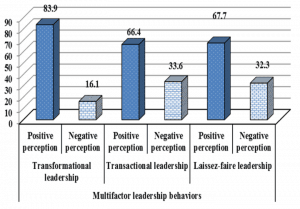
Yum or Yuck?
Here’s an excerpt from Phil’s upcoming book on the Hero Assumption for your reading pleasure.
I’ve told my wife Janet she should put “demotivational speaker” on her LinkedIn profile. “If you’re not cryin’, you’re not tryin’,” she used to prod our daughter when she was growing up–while she was in tears. But it’s not Janet’s fault. She comes by it naturally. She learned her coaching style from her dad.
Some people think the lemonade glass is always half-full. Others see the glass as half-empty. Then there was my father-in-law; may he rest in peace. He was more of an “Is that lemonade or a urine sample?” kind of guy.
When Janet and I found out we were pregnant with our daughter, we were excited to tell her mom and dad. They lived in Florida, so we had to deliver the news by phone. We figured Janet should be the one to tell them. That was our first mistake—she was nervous, and her parents weren’t always the easiest to talk with. Her dad answered the phone. Starting with him was our second mistake. He was an engineer and really smart but sometimes a little slow on the uptake when it came to people stuff.
Janet jumped right in. She made sure her mom was in earshot so they could both hear at the same time, which made things a little awkward from the start. Then she got right to it—sort of. “Well, Phil and I wanted to let you know that I took a pregnancy test. And it came back…,” followed by an awkward silence.
I’ve only had one chance to do a pregnancy reveal, but if I had to do it over again, I wouldn’t bury the lead by talking about the pregnancy test. Because at the end of the awkward silence, Janet just blurted out, “POSITIVE!” Her mom, who was listening in the background, immediately figured out what was happening and started screaming. Her dad confusedly asked, “Positive for WHAT?”
I’m not sure what other conditions her dad thought pregnancy tests identified, but he was definitely thinking more about the urine sample than the full glass!
Some leaders are a lot like my father-in-law, always looking at the glass half-empty (or worse). It’s easy to do. Leaders today–especially frontline leaders–often feel powerless. Squeezed between demands from above and below, they don’t believe they can make a real difference in the lives of those they lead.
Frustrated, stretched-thin, and often burned out, they assume the worst about their teammates. They watch their team like a hawk, waiting for a screw-up they know is bound to happen. They habitually look at the glass half-empty. Some days, it’s lemonade, and other days…well, you get the picture.
Most leaders don’t want to be glass-half-empty types whose approach reinforces a terrible “race to the bottom” culture. They want something more. They want to reap the benefits of their hard work and see their teammates thrive. They want to feel like they matter. And they do.
Yum and Yuck
“There are only two mantras, yum and yuck. Mine is yum.”
Tom Robbins
Novelist Tom Robbins offers a great way to describe the difference between glass-half-empty and glass-half-full leaders. Before I started writing my last book, The Approachability Playbook, I spent a couple of years asking anyone who would listen to me this question (nerd alert): “What do you think is the one leadership ring to rule them all?”
One day, one of my friends replied, “You know, I’m not sure this is the one ring, but a mentor of mine taught me this test he used that would immediately tell him whether someone would be a good manager.” I was all ears.
“He would have the potential manager imagine that a coworker comes up and makes a factual statement they know is flat out wrong,” she explained, “something every employee should know. And then he’d ask them, ‘what’s the first thing that comes into your head?’”
Take a second and imagine this for yourself.
What comes up? Is your first instinct to correct their mistake? To tell them what they got wrong? Did you wonder how they could be so off-base? Deep down, did you think they might not be that bright? That’s the mantra of yuck. That’s what I call the Villain Assumption.
Leaders who make the Hero Assumption believe everyone on their team wants to be great and to do great work. They choose the mantra of “yum.” They handle situations like these with curiosity. They wonder, “What are they seeing that I’m not seeing?” They ask questions. “Does this person have the facts right?” They are open to the idea that maybe they’re the one who needs to adjust something. They try to learn.
They see a world of possibility and abundance, not a zero-sum world of limitation and scarcity. Their assumption is ALWAYS that their teammates are smart, capable, and on top of things. When they look at their teammates, they think “yum,” not “yuck.”
This is a chance to remind your teammates of their talent and how they’ve overcome obstacles in the past. It’s a time to remind them that you believe in them and then pitch in to help in any way you can. Leaders who think “yuck” see this as a failure of someone who just doesn’t “get it.”
A boss who makes the Villain Assumption sees someone going above and beyond and thinks, “Yuck, this go-getter is going to show me up or expect some favor in return.” A leader making the Hero Assumption thinks, “Yum,” and makes sure this contribution is noticed, celebrated, and appreciated. They make a mental note to remind their teammate of this success in the future when an obstacle gets in their way.
The key to being a great leader? Don’t think “Yuck,” think “Yum.”















